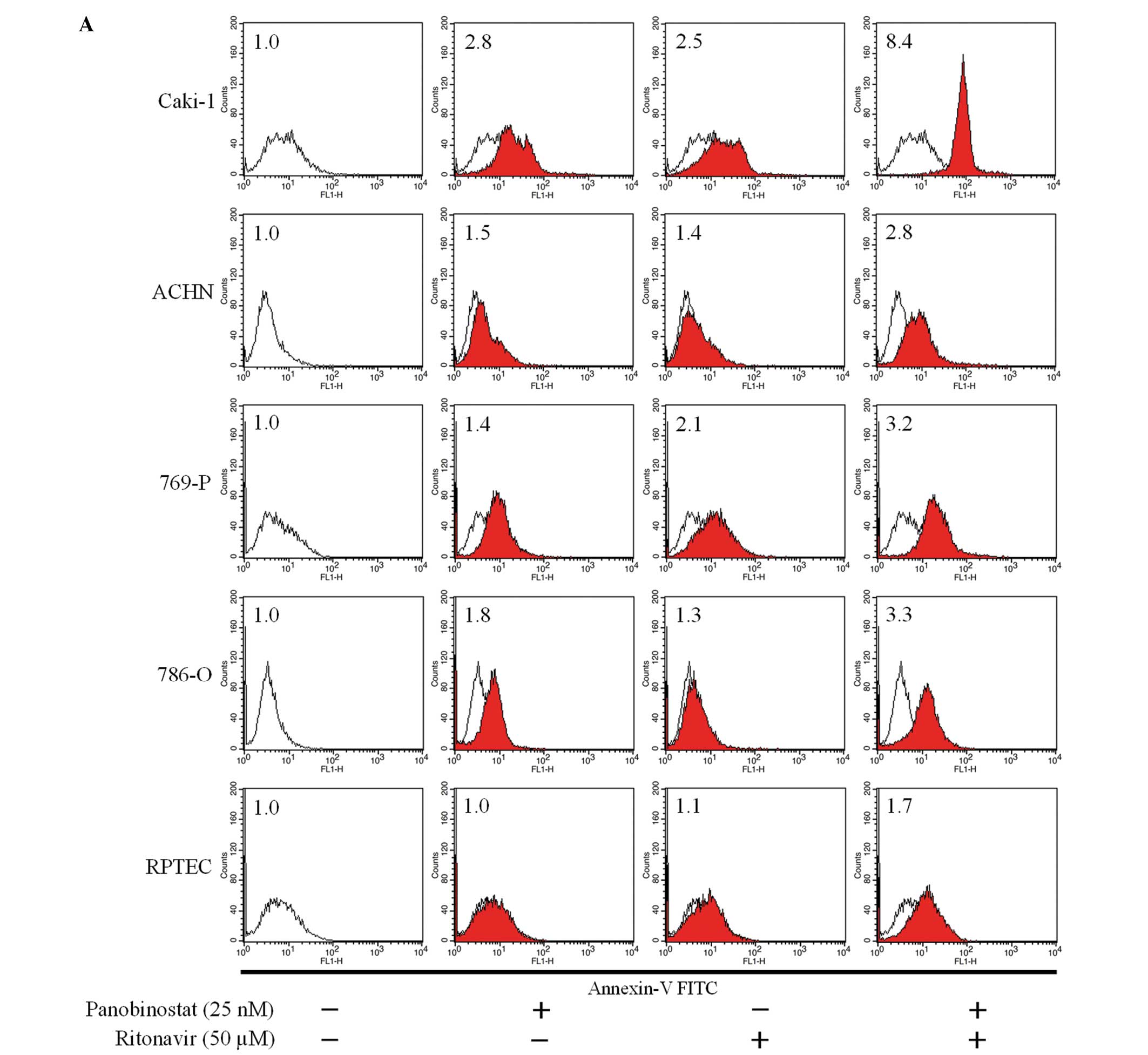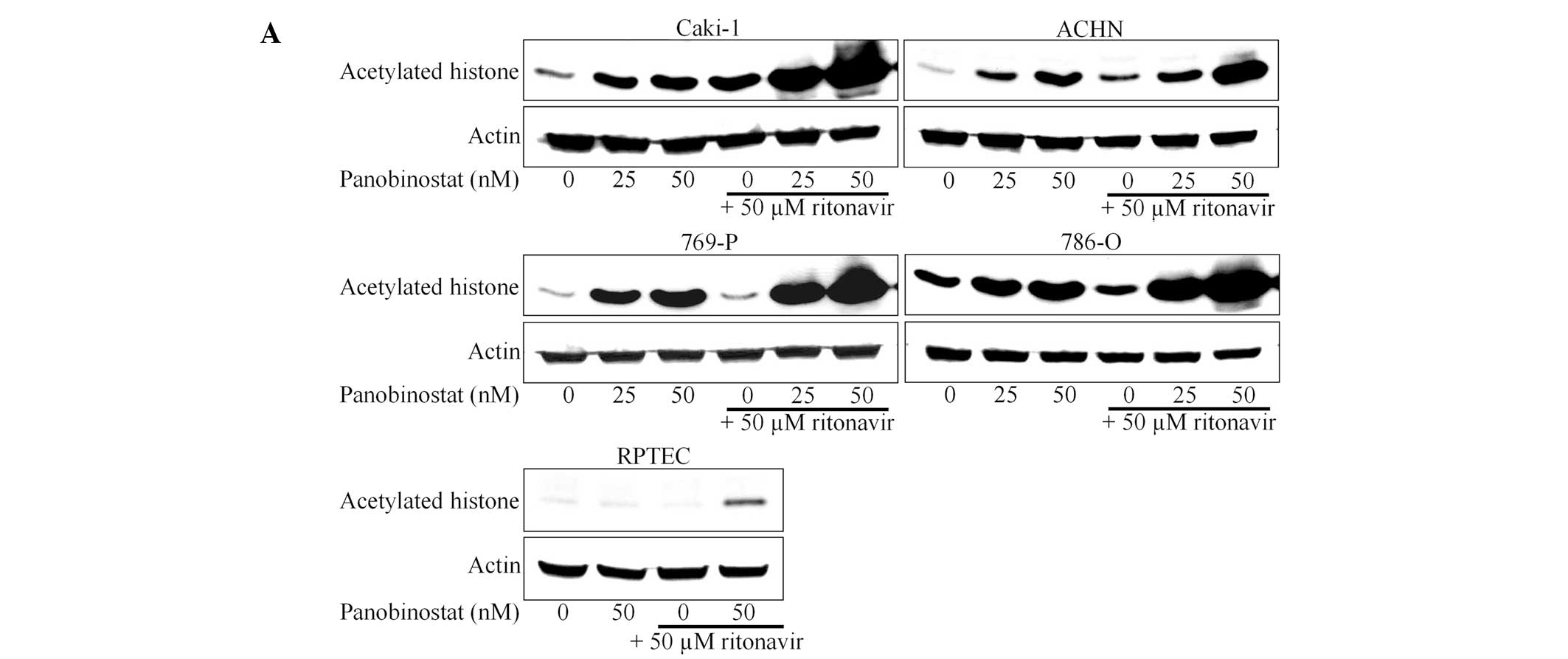Ritonavir acts synergistically with panobinostat to enhance histone acetylation and inhibit renal cancer growth
- Authors:
- Published online on: July 15, 2014 https://doi.org/10.3892/mco.2014.349
- Pages: 1016-1022
Metrics: Total
Views: 0 (Spandidos Publications: | PMC Statistics: )
Total PDF Downloads: 0 (Spandidos Publications: | PMC Statistics: )
Abstract
There is currently no curative treatment for advanced renal cancer. Enhancing histone acetylation is a promising epigenetic‑based therapy for cancer; however, in solid tumors, the efficacy of histone deacetylase (HDAC) inhibitors alone is limited. The human immunodeficiency virus protease inhibitor ritonavir is also a CYP3A4 inhibitor and we hypothesized that combining ritonavir with the HDAC inhibitor panobinostat, one of the substrates of CYP3A4, may effectively eliminate renal cancer cells by enhancing the activity of panobinostat. The combination of ritonavir and panobinostat synergistically inhibited cancer cell growth and cancer cell colony formation, while only slightly inhibiting the growth of renal proximal tubule epithelial cells. This combination significantly induced apoptosis in cancer cells and this apoptosis was considered to be caspase‑dependent, since the pan‑caspase inhibitor Z‑VAD‑FMK reduced the number of Annexin V‑positive cells. In murine subcutaneous xenograft models using Caki‑1 cells, a 10‑day treatment with the combination of ritonavir and panobinostat significantly inhibited tumor growth. Panobinostat alone increased histone acetylation in a dose‑dependent manner and the co-administration of ritonavir synergistically enhanced this acetylation. Furthermore, this combination inhibited the expression of HDACs, which may also play a role in the enhancement of histone acetylation. Thus, the present study may provide a basis for testing the combination of ritonavir and panobinostat for patients with advanced renal cancer.












